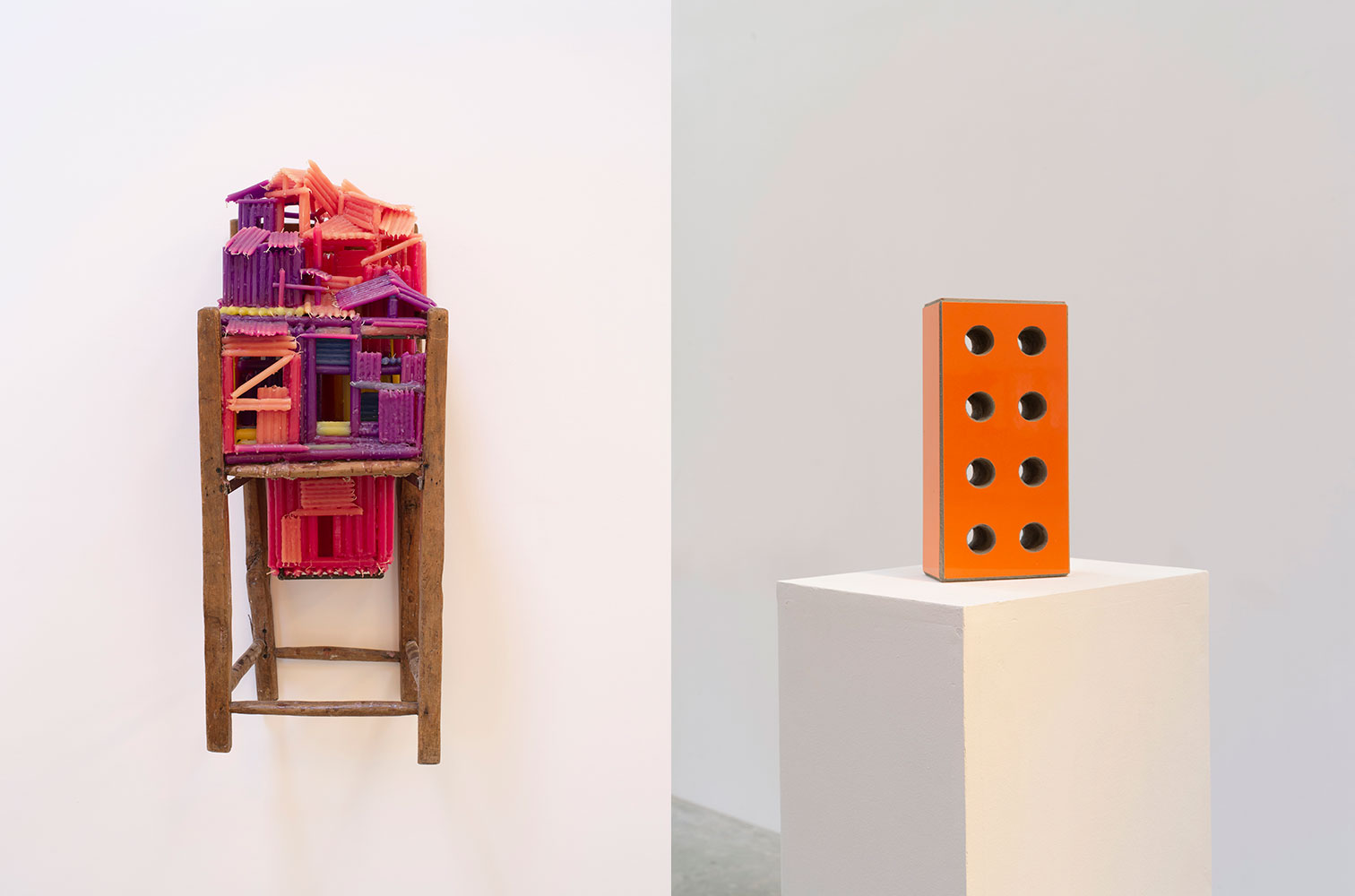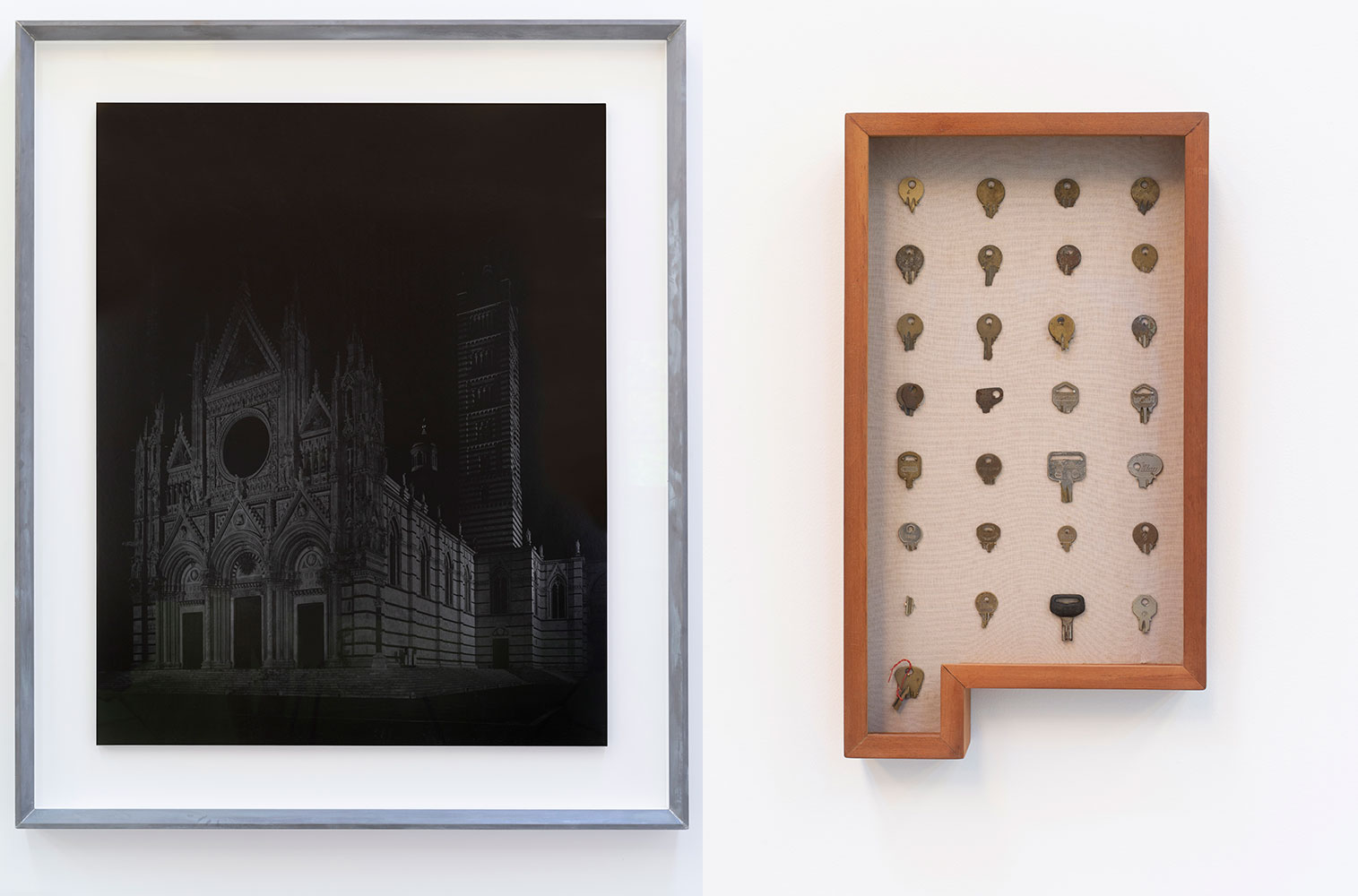ART-PRESENTATION: Intersections
 The large group exhibition “Intersections: celebrates the points of meeting and divergence of Galleria Continua’s artists and their works. This recent period was marked by a radical change in our personal relationships. We have learned to perceive reality by simulating a normality through a mediated screen: continuing to see ourselves, discuss, travel or visit exhibitions, via the internet. Our inability to move was circumvented by this technology, which has undoubtedly made it possible to appreciate the works differently and to continue to create exhibitions or to distribute the works thanks to digitization.
The large group exhibition “Intersections: celebrates the points of meeting and divergence of Galleria Continua’s artists and their works. This recent period was marked by a radical change in our personal relationships. We have learned to perceive reality by simulating a normality through a mediated screen: continuing to see ourselves, discuss, travel or visit exhibitions, via the internet. Our inability to move was circumvented by this technology, which has undoubtedly made it possible to appreciate the works differently and to continue to create exhibitions or to distribute the works thanks to digitization.
By Dimitris Lempesis
Photo: Galleria Continua Archive
After rediscovering the place and time of contemplation, we try to invert the process: create a space in the broad sense, a living space born from the association of two works of art from two totally different contexts. Through this juxtaposition we build interactions between them and between us and rediscover the materiality of the works. The junction of two thoughts, the crossing of paths, the breaking point or the meeting point. The intersection, the common thread of this exhibition, is certainly multi-layered and ambiguous. This is what we intended to show by exploring these possible relationships. Some of these fictitious couples meet for the first time in the space of the gallery. Not love at first sight, but rather a slow acquaintance. In “Traditional Repair, Immaterial Injury” by Kader Attia a deep scar embedded in the ground is covered with staples somehow trying to repair it, albeit inadequately. In non-Western societies, redress is not synonymous with perfection, it focuses on repair and its consequence: the scar. These are therefore revealed, brought to light, like a trace, an integral part of the story of each individual. This trace is also present in the two works “Testimonio de la Brisa” by Elizabet Cerviño, a young Cuban artist who manipulates an iron- rich painting on linen canvases, managing to recreate rust and capture the passage of time. This reddening that has the illusion of imposing rocky cliffs, are not only the trace of a chemical reaction between iron and air, but refers us to the very island of Cuba, this island eroded by the sea that surrounds it. At the centre of these duets, on a two-headed throne are placed the largest and the smallest work of the intersections. The first is “Home Sweet Home” by Pascale Marthine Tayou, who erected on huge tree trunks, roughly forty bird cages, approximately one hundred column statuettes, cables, and microphones, creating a cacophony of materials presented with the soft songs of birds. This whimsical and fantastic house questions us on the very notion of home. The second, “Brick” by Zhanna Kadyrova, is a work that seems to sum up perfectly all the artist’s favourite themes. On the one hand, the use of common materials, very frequently used in all countries of the former Soviet Union, such as cement and ceramic tiles. On the other hand, its brick shape of standard dimensions, takes us back directly to the origin of the elements that constitute it. This artistic metonymy allows the artist to voluntarily abandon clay (a material usually composing bricks) to shape it in her own way. Zhanna Kadyrova’s house is therefore reduced to its essential, the brick that composes it. Continuing the route we come face to face with the work of Carlos Garaicoa “Deleuze & Guattari Fixing the Rhizome” born out of the artist’s obsession with accumulation. He is interested in the concept of numerical increase in mathematics in relation to with that of Rhizome in philosophy. This constantly evolving structure, deprived of hierarchy and in permanent horizontal extension, is interpreted by the artist in the form of an installation with hammers. Connected to each other they take possession of the wall and compose a structure that knows no beginning or end, thus creating a collection of elements, which seem to multiply ad infinitum. This work is associated with “Rainbow Trusses (studio suggestions creatures III)” by Loris Cecchini who wields the subtle art of the intersection between science and nature. Here the structure of the piece diffracts white light to artificially create rainbows bathing the surrounding horizons with colors. Beyond this capacity, the work also represents a renewal of the cabinet of curiosities, with the evocation of the marine world via sponges, shells and corals forming a collection with an expansive potential. Each of these two works thus evokes accumulation, whether philosophical or materialist, of the passionate collector. Previously hidden, a new view of the old Moulin is revealed. The fragmented gaze is supported thanks to the coloured patterned windows punctuated by 8.7 centimetre white stripes – Daniel Buren’s signature visual tool. The in situ work “Sans toit, mais avec fenêtres” magnifies the old factory windows through red, green, blue and golden yellow color films. The artistic and architectural gestures of Daniel Buren and MBL architects respectively are jointly deployed with a view to opening up to more indulgent skies. This is also the will of Pascale Marthine Tayou with the fresco “Bogolan Colors” the name of an African fabric. The exterior facade of the cloister is adorned with lively colors reflecting the artist’s imagined world.
Participating Artists: Kader Attia, Loris Cecchini, Chen Zhen, Berlinde De Bruyckere, Carlos Garaicoa, Osvaldo González, Zhanna Kadyrova, Ahmed Matter, José Manuel Mesías, Ornaghi & Prestinari, Susana Pilar, Michelangelo Pistoletto, Hiroshi Sugimoto, Pascale Marthine Tayou, Sislej Xhafa and José Yaque.
Photo: Pascale Marthine Tayou, Bogolan Color, 2020, Courtesy the artist and GALLERIA CONTINUA, Photo by Bertrand Huet / Tutti
Info: Galleria Continua, 46 rue de la Ferté Gaucher, Boissy-le-Châtel (seine-et-Marne), Duration: 18/10/2020-30/5/2021, Days & Hours: Fri-Sun 11:00-17:00 (To schedule your visit send an email to publics@galleriacontinua.fr), www.galleriacontinua.com





Right: Zhanna Kadyrova, Brick, 2007, ceramic tiles, cement, 28 x 13 x 8 cm, Approx. 1kg, unique work, Courtesy the artist and GALLERIA CONTINUA, Photo by Bertrand Huet / Tutti








Right: José Mesías, Sans Titre, 2010-2015, broken keys, wooden box and glass, 54 x 30 cm, unique work, Courtesy the artist and GALLERIA CONTINUA, Photo by Bertrand Huet / Tutti


Center: Pascale Marthine Tayou, Love Letter, 2015, straw mat, charcoal powder, plastic letters, colored pins, bogolan Mali, nails and staples on wood, 170 x 82 x 3 cm, unique work, Courtesy the artist and GALLERIA CONTINUA, Photo by Bertrand Huet / Tutti
Right: Sislej Xhafa, Father, 2013, red granite tombstone with telephone receiver 85 x 61,5 x 30,5 cm, Ed. unique variation, Courtesy the artist and GALLERIA CONTINUA, Photo by Bertrand Huet / Tutti
